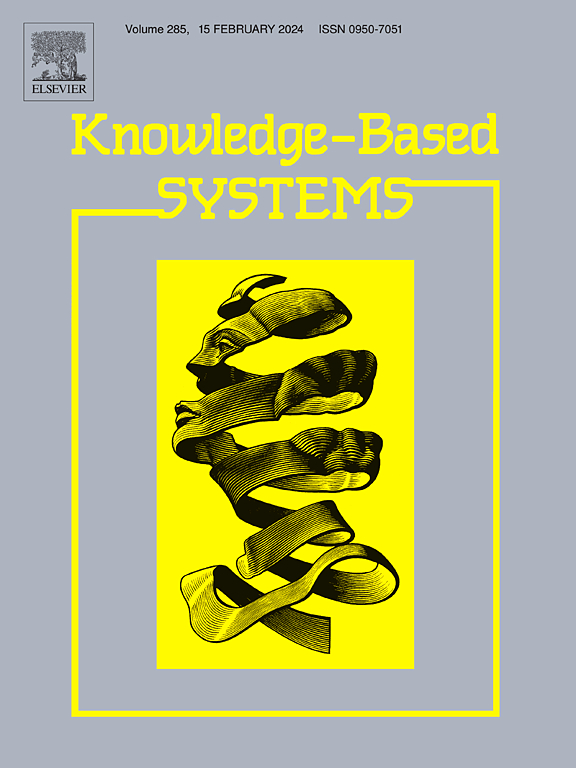通过互信息最大化学习细粒度意图,实现知识感知推荐
IF 7.2
1区 计算机科学
Q1 COMPUTER SCIENCE, ARTIFICIAL INTELLIGENCE
引用次数: 0
摘要
知识感知推荐系统利用知识图谱(KG)来丰富项目信息,已被证明可以提高推荐的准确性和可解释性。此外,知识图谱还能进一步确定用户选择项目的意图(即用户选择感兴趣项目的原因)。传统方法将意图表示为 KG 中的关系集或 KG 实体。然而,这些方法无法充分利用实体和关系提供的综合信息。为了解决这个问题,我们提出了一种新的基于 KG 的用户意图提取框架 (KIEF),以便在更精细的层次上捕捉用户意图,从而进行推荐。具体来说,我们提出了一种新颖的意图表示法,这种表示法采用了关系感知实体表示法,从而提高了用户意图的粒度。此外,由于幼稚园可能包含有损用户意图质量的噪声信息,因此必须考虑幼稚园中哪些因素对代表用户意图非常重要。因此,我们引入了全局意图和局部意图,前者是所有用户整个交互过程的综合特征,后者则是单个用户从个人历史中获得的经验特征。通过最大化全局意图和局部意图之间的互信息,KIEF 可以捕捉用户对物品的偏好。通过在四个真实世界基准数据集上的广泛实验,我们证明了 KIEF 优于最先进技术的性能,并分析了理解用户意图的可解释性解释。本文章由计算机程序翻译,如有差异,请以英文原文为准。
Granular intents learning via mutual information maximization for knowledge-aware recommendation
Knowledge-aware recommender systems, which utilize knowledge graphs (KGs) to enrich item information, have been shown to improve the accuracy and explainability of recommendations. Besides, KGs are further explored to determine the intent of choosing items (i.e., the reason why users select items of interest). Conventional methods represent intents either as sets of relations in a KG or as KG entities. However, such approaches fail to fully leverage the combined information provided by both entities and relations. To address this issue, we propose a new KG-based user Intent Extraction Framework (KIEF) to capture user intents at a more fine-grained level for recommendation. Specifically, we propose a novel intent representation constructed with relation-aware entity representation, encouraging finer granularity for user intents. Furthermore, since a KG may contain noisy information that impairs the quality of user intent, it is compulsory to consider which factors in a KG are important to represent a user’s intent. Thus, we introduce global intent which are comprehensive features for the entire interactions of all users and local intent, which are empirical features of individual users from personal history. By maximizing mutual information between global and local intents, KIEF captures user preference for items. Through extensive experiments on four real-world benchmark datasets, we prove the superior performance of KIEF over the state-of-the-art and analyze interpretable explanations for understanding user intents.
求助全文
通过发布文献求助,成功后即可免费获取论文全文。
去求助
来源期刊

Knowledge-Based Systems
工程技术-计算机:人工智能
CiteScore
14.80
自引率
12.50%
发文量
1245
审稿时长
7.8 months
期刊介绍:
Knowledge-Based Systems, an international and interdisciplinary journal in artificial intelligence, publishes original, innovative, and creative research results in the field. It focuses on knowledge-based and other artificial intelligence techniques-based systems. The journal aims to support human prediction and decision-making through data science and computation techniques, provide a balanced coverage of theory and practical study, and encourage the development and implementation of knowledge-based intelligence models, methods, systems, and software tools. Applications in business, government, education, engineering, and healthcare are emphasized.
 求助内容:
求助内容: 应助结果提醒方式:
应助结果提醒方式:


